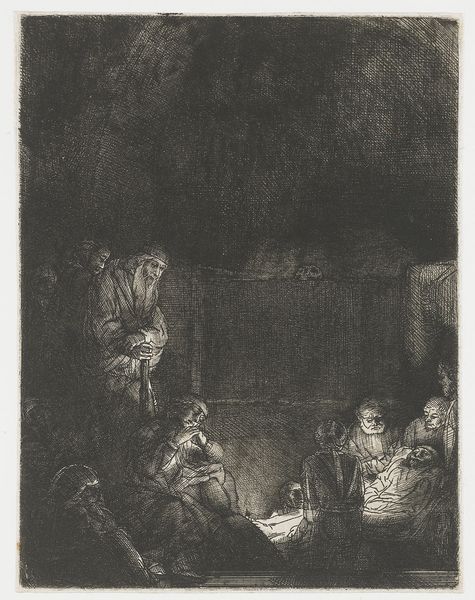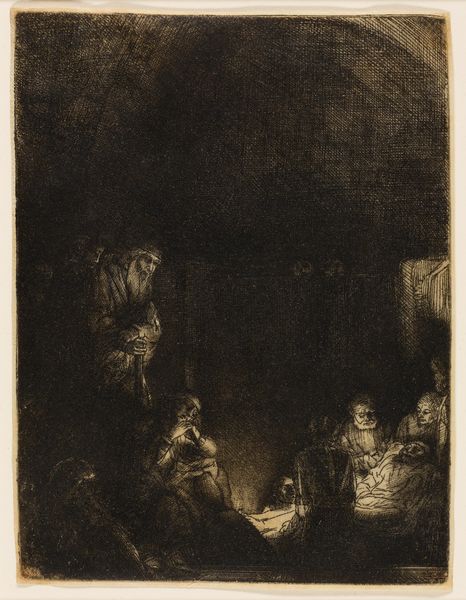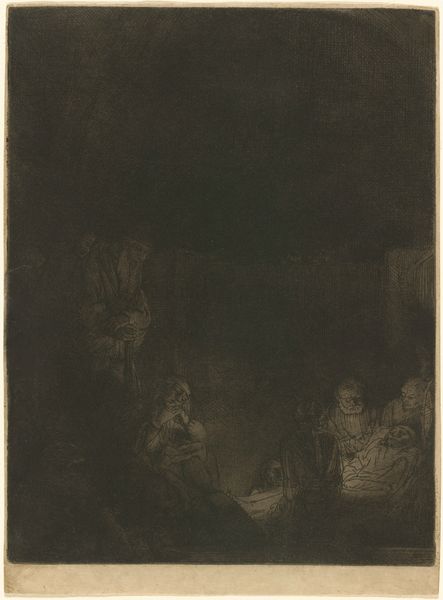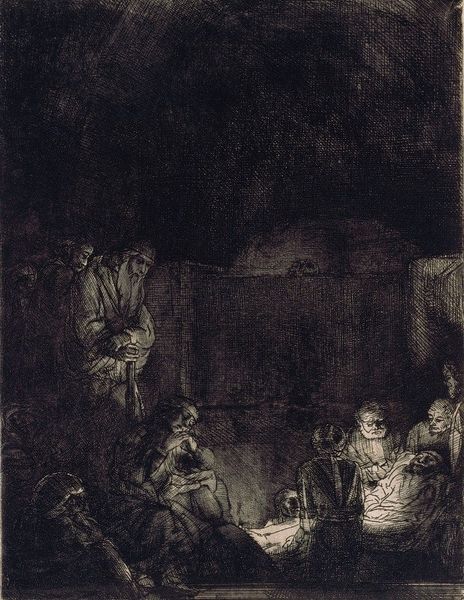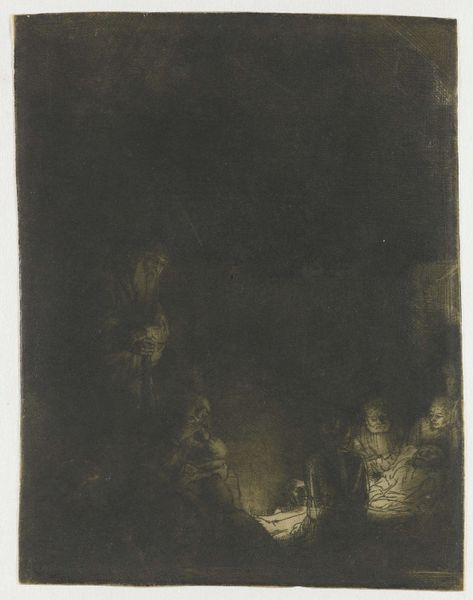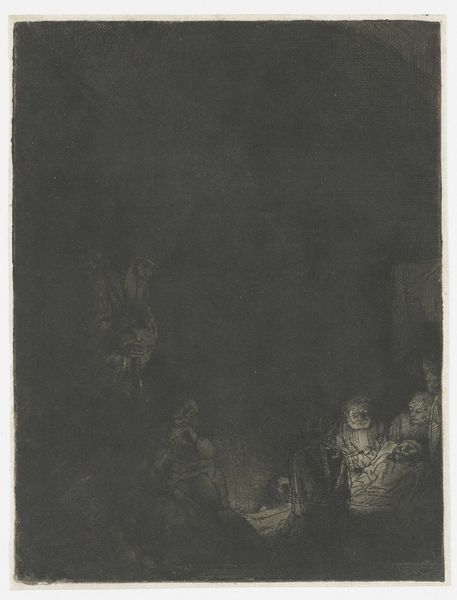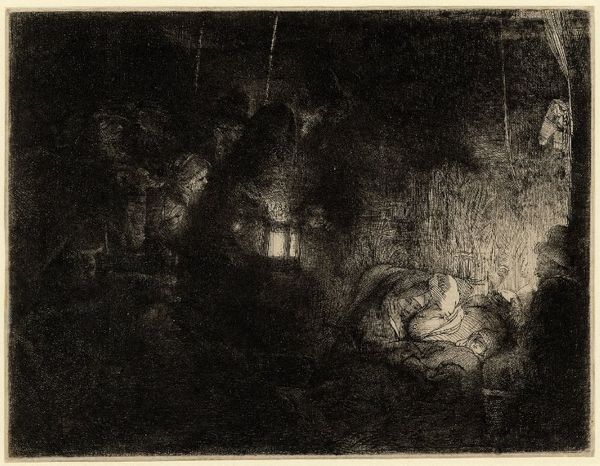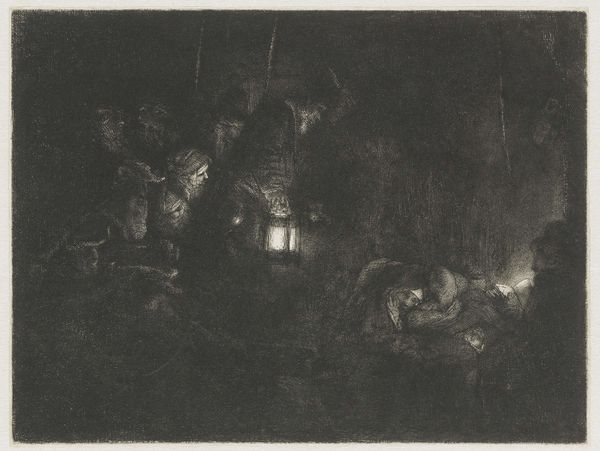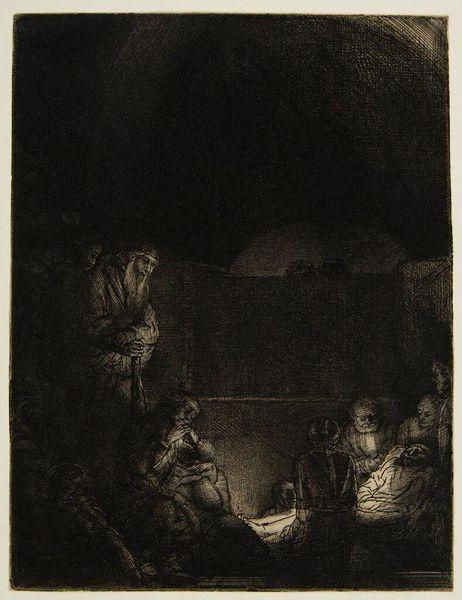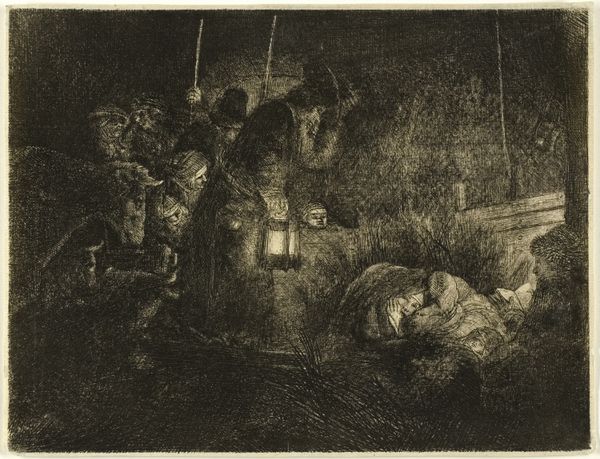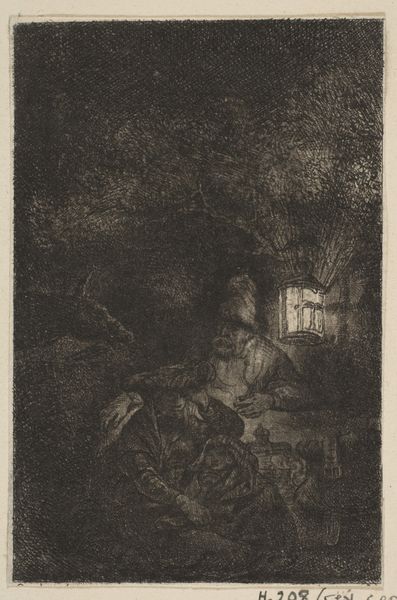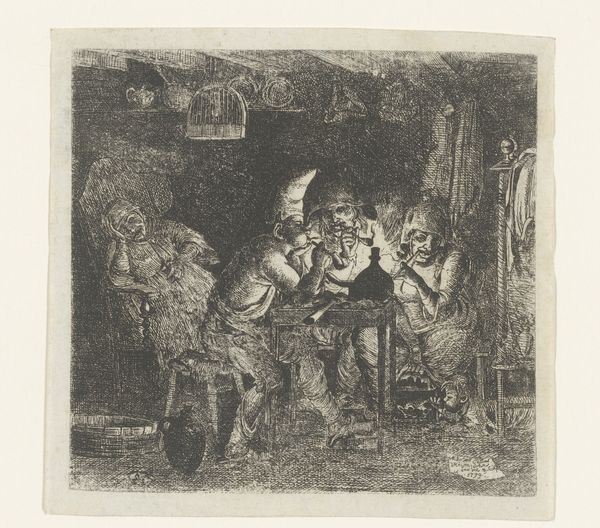
print, etching
#
baroque
# print
#
etching
#
charcoal drawing
#
figuration
#
history-painting
Dimensions: height 210 mm, width 161 mm
Copyright: Rijks Museum: Open Domain
Editor: We’re looking at "The Entombment" by Rembrandt van Rijn, an etching from around 1654, currently held at the Rijksmuseum. The heavy shadows give it a really somber, almost claustrophobic feeling. What can you tell us about the way Rembrandt depicts grief in this piece? Curator: This work exemplifies how Rembrandt used the Baroque style to explore human emotion in profound ways. But instead of just looking at it aesthetically, let’s consider the socio-political context. Think about the Dutch Republic in the mid-17th century – a time of great prosperity, yet also of religious and social upheaval. Does this depiction of mourning, particularly the central figures huddled together in the darkness, resonate with you in relation to the social climate of the period? How does the emphasis on community, however sorrowful, speak to collective identity formation at this moment? Editor: I see what you mean. It’s not just a religious scene, but also maybe a commentary on the shared experiences and vulnerabilities within Dutch society at the time. It's almost as if the darkness is a metaphor for the uncertainties they faced. Curator: Precisely. And think about who gets to be represented in these scenes and who gets left out? In religious art, which narratives are amplified and which are silenced, and what does that tell us about the power dynamics inherent in both art production and religious doctrine? Rembrandt’s chiaroscuro can also be interpreted as a visual metaphor for these obscured truths and unspoken narratives. Editor: So, it’s about pushing past the immediate religious narrative to see the broader social and political landscape. Curator: Exactly. And questioning how power and representation intersect within artistic expression, urging us to engage with art as a form of cultural critique and social commentary. Editor: That's fascinating; I’ll never look at a Rembrandt etching the same way again. Curator: Nor should you! Always seek those underlying conversations.
Comments
No comments
Be the first to comment and join the conversation on the ultimate creative platform.
